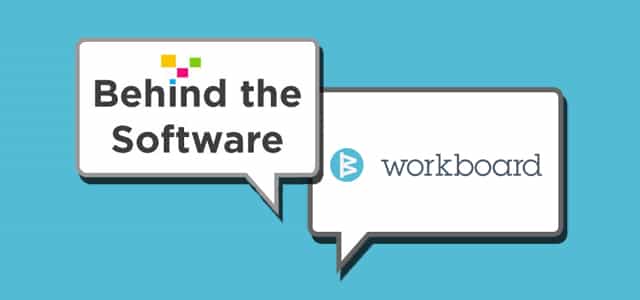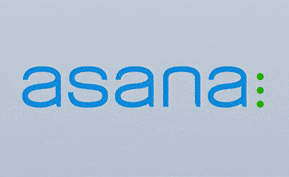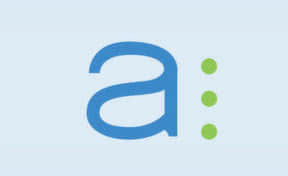Task Management
Let's Talk Workboard: Behind the Software with CEO Deidre Paknad

One wouldn’t need to look far to find a stressed-out manager wading through an assortment of collaboration and project management tools. The last thing a VP has time for is to fiddle around with a collaboration tool, navigating how-to guides to run reports or gathering status information from three, four or even five different sources. As it stands, managers are spending an exorbitant amount of time working to align their team’s goals, unify priorities and drive execution.
Workboard has come onto the scene focusing on getting managers their time back through transparency and true collaboration of information. Like a breath of fresh air, the team at Workboard has developed a powerful yet simple solution around struggles that are often exacerbated in enterprise environments. In this Behind the Software with Workboard CEO Deidre Paknad, we had a chance to speak about her vision when founding Workboard and how the solution takes on some of the big names in the arena.
Why don’t you start off by giving us a little bit of background on what inspired you to found Workboard? What challenges were you seeing in the industry that existing products failed to address?
Not only was my week longer, it took away from working with customers or building real advantage. I thought, “There’s got to be an easier way than the PowerPoints with the goals, the spreadsheets with execution lists, the collaboration sites with document litter and the status meeting hell — I need a faster, better way to lead a team and achieve goals.”
[We] couldn’t find an app for managers and leaders to align with execution and priorities with business goals, so we started Workboard! It vertically integrates goals, priorities, work and feedback in a single app. The goals, priorities, work, and status are all shared and transparent across the team, so everyone operates on the same fact set and toward the same outcomes. It’s much easier for people to work their priorities instead of their inbox.
There are a lot of project management apps out there, but in my experience in a large enterprise, most managers manage marketing, communications, services, development and product lifecycles, rather than projects. They lead teams of people and a business function and they’re responsible for delivering a set of business results. Those business results are not sub-tasks and minutiae. Rather than working down into detail, we saw an opportunity to align and connect work upward to goals and business priorities. I didn’t want more detail; I wanted more transparency and velocity to goal and meter on our progress to it.
If you could choose the three most valuable features in Workboard, what would they be and why?
The first one would be transparency on the team’s goals and objectives, which are front and center. The second is that as a Workboard user, my own action item list is naturally aligned with those objectives. Because Workboard has native Web, Android and iPhone apps, the list of work I’m trying to get done is always in my hand and always in sync with goal. Here’s an interesting factoid: 76 percent of people report using To Do lists, but only 7 percent of employees know what they need to do to achieve the goals of the organization! That’s a huge gap and one that we easily close!My third favorite is automated status and progress reporting; just take that off my back, I don’t need to do it anymore, my team members don’t need to do it anymore, the managers above me don’t need to do it anymore — that all gets automated. Perhaps the most common complaint you hear from people who work in large enterprises is fatigue from endless status meetings and reporting. “Where are we against goal?” is the constant question.
As the website states, your app is “forever free” to use, though premium features are available for an additional fee — why did you choose this type of free/paid model (similar to vendors like Evernote and Dropbox)? What benefits do your premium features bring to users, and how much does it cost to upgrade?
Among other things, Evernote and Dropbox have done very well, so they’re great footsteps to follow! But it’s also good to compare the alternative: If we didn’t do it like an Evernote or Dropbox, it would mean that we would hire a large sales organization that would fly around the world to meet with senior executives to buy the application for their division, or their enterprise. That turned out to be much more expensive for us than providing the app for free to people who find it valuable.
The alternative is also much worse and more expensive for the business manager with the problem who wants his 10 hours a week back and to achieve his goals with fewer resources and greater speed. In the old-world model, that manager would have to wait for pain relief through a nine-month or 12-month sales cycle, until everyone else in the division agrees that that’s the way to go about it and someone agrees to spend a ton of money upfront. The way we look at it is this approach is better for the customer and less expensive for us to engage with customers with a free app than starting with a sales force and long sales cycles.
Our first premium offer will be announced later this month. It will have pretty cool visuals, a neat way to set, publish and track metrics for goals. We want to get it into people’s hands while they’re focused on publishing and achieving business goals. The pricing is consistent with the kind of pricing you see with an app like Evernote or Dropbox. [Users can] share and achieve goals for the price [of] a weekly double soy latte, instead of the price of a house!
Now that we’ve discussed the value and functionality, could you share an example of when a company would benefit from using Workboard, and who the ideal user would be?
“We want to help the tens of millions of managers trying to deliver great results over despite increasing noise, distraction and distance.”
The typical Workboard user is a first-, second- or third-line manager in a larger organization or a senior leader in a mid sized one. The managers who really drive execution and achieve goals for their companies; they coordinate the resources and make sure the right things get done in the right order at the right time.
Typically their environment has a lot of friction: there are a [bunch of people] on the CC list of every email, they have an email quota that makes work harder, their tools are 25 years old. At the same time, these companies need to report better financial results every quarter. The pressure to execute can be intense while the teams are, especially in large enterprise, distributed over different buildings, states and often countries. We want to help the tens of millions of managers trying to deliver great results over despite increasing noise, distraction and distance.
There are many big names that have already begun using Workboard — to what do you owe the rapid success and adoption of the software?
I think the managers that tend to sign up for Workboard are very focused on achieving their goals, and they’re looking for [a better] way to do that. In some ways it’s that our message is a welcome one and the tools work well. I think it’s also that [the app is] very easy to use, to get your team on and accelerating.
Workboard is already available in both the Apple App Store and Android on Google Play — what are your goals and vision for the two mobile applications moving forward?
Mobile is really important to us, because many of our customers travel and most work whether they’re at the office or not. The focus on the mobile apps is to have a seamless experience where you can stay on priority and on goal, wherever you are — and that you’re not defaulting to your email inbox. On January 9th, we released a new Android version with some great analytics on team work that I’m excited about. Both mobile apps are native, so they take advantage of the features and experience each device type has to offer.
Are there any capabilities you’re currently working on, or would like to see incorporated into future releases of the solution? What can users expect to see from Workboard in the coming year?
“We spend a huge amount of time engaged with our users, really listening to what will help them be more successful.”
The list is so long, it would literally take the rest of our lives! We have no shortage of ideas. We have a great community of users that influence our feature list and priorities. We spend a huge amount of time engaged with our users, really listening to what will help them go faster and be more successful, what will make work feel better and more fulfilling. This guides our release plans. We do significant feature releases every 21 days, so we really push those features out there quickly.
The things that are on the horizon in a relatively near term are a major announcement on goals and metrics along with more nuanced organization structure and one that can grow both virally and hierarchically. New badges, more personal stats, more team stats, more ways to tailor your dashboard and reports are also on deck, so people can better understand their execution habits and business results. We want to help managers and their teams be and show off what rock stars they are!
Looking for more of our Behind the Software exclusive interviews? Drop by the Business-Software.com blog homepage for our collection of Q&As.







